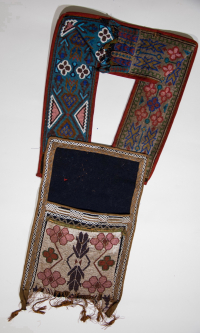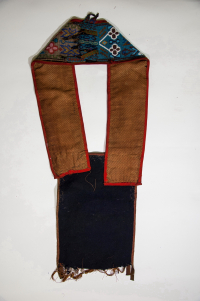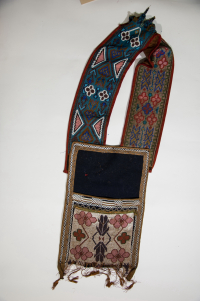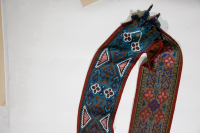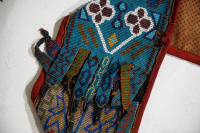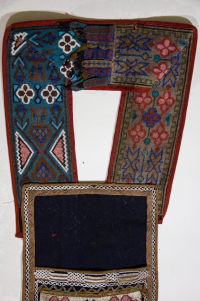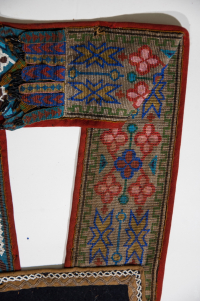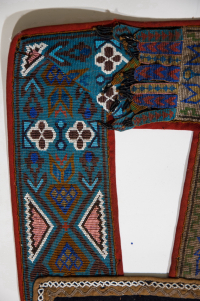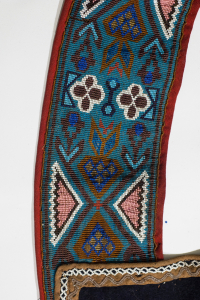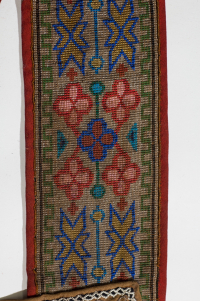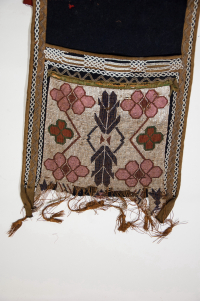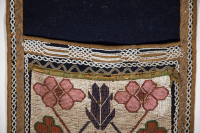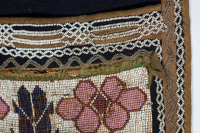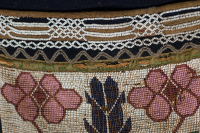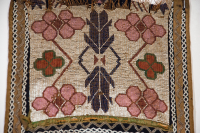Bandolier bag
Bandolier bag
Bandolier bag
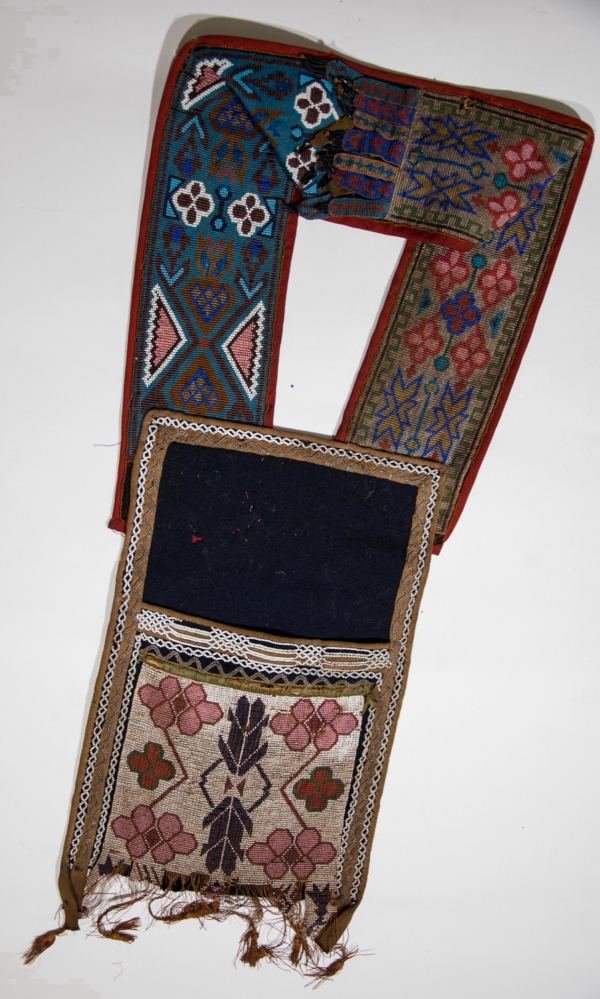
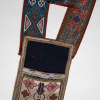
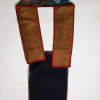
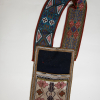
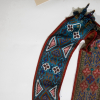
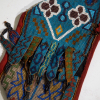
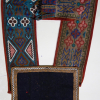
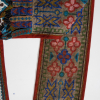
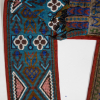
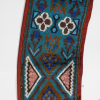
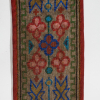
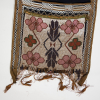
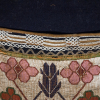
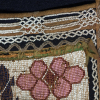
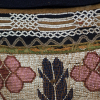
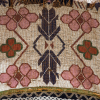
Bandolier, loom woven beadwork panel, stroud, straps and tabs, symmetrical & asymmetrical decorative beaded designs.
catalogue records
based on Catalogue records
Read More About This Relative
Stroud, cotton cloth, loom woven beadwork panel, seed beads, tube beads, silk ribbon, bias tape.
Loom woven beadwork panels applied to stroud pouch panel and straps, Border and edging of pouch panel brown bias tape forming tabs at bottom corners, Borders decorated with applied transparent bead, Green silk ribbon sewn over thread ends above pocket, Strap made of black cotton edged with red bias tape, lined with white on yellow cotton, Two individual loom woven beaded panels form straps, applied to black cotton, lined with white on yellow cotton and edged in red bias tape, but not joined at top of strap, Each strap panel ends at top with fringe of seven beaded tabs finished with four strands black tube beads tied at ends, Tabs on bottom edge of pouch badly deteriorated.
Border of pouch decorated with applied spot stitched transparent beads, snake design, white linked diamond chain beads, and white otter track design, Pouch decorated with solid loom woven seed bead, four dot, rose, leaf - Lyford and geometric designs on white field, Design on straps conventionalized and geometric, one strap bears a transparent field, other strap opaque blue, Seven beaded tabs form fringe, geometric design.
Provenance
"Bandolier bags most likely originated in the Upper Great Lakes region during the 1840s and 1850s. Fashioned exclusively from European materials and adorned with thousands of beads, bandolier bags were primarily for show, as a symbol of identity, wealth and status. Although initially functional, by the late 19th and early 20th centuries many of the bags had false pouches or none at all. Sometimes called "friendship bags", they were often created as gifts to strengthen relationships within communities or between nations. By the 1870s they had become an important element of formal dress worn mainly at ceremonies and celebrations by men, and occasionally by women. They wore them - singly or several at a time - crossed over the torso or draped around the neck. The wearing of more than one bag was generally the prerogative of a leader or a person of high honour." (McCord, 2013) Bandolier adopted by Ojibwa in 19th century after seeing bullet pouches used by British soldiers. Bullet pouches were plain and decorated with crest or coat of arms. When idea adopted by Ojibwa, they were greatly prized and highly decorated ceremonial accessories. They became so highly prized by Ojibwa and other tribes (especially Sioux), that one bandolier could be traded for one pony. They became a status symbol of highest ranking Midewiwin priests. Source of Function Data Includes: McCord Museum, Wearing Our Identity. Montreal: The McCord Museum, 2013; Print.
About This GRASAC Record
Manitoba Museum













catalogue records attribute this bandolier to Northeast Great Lakes-Riverine
 Knowledge Sharing Platform
Knowledge Sharing Platform

